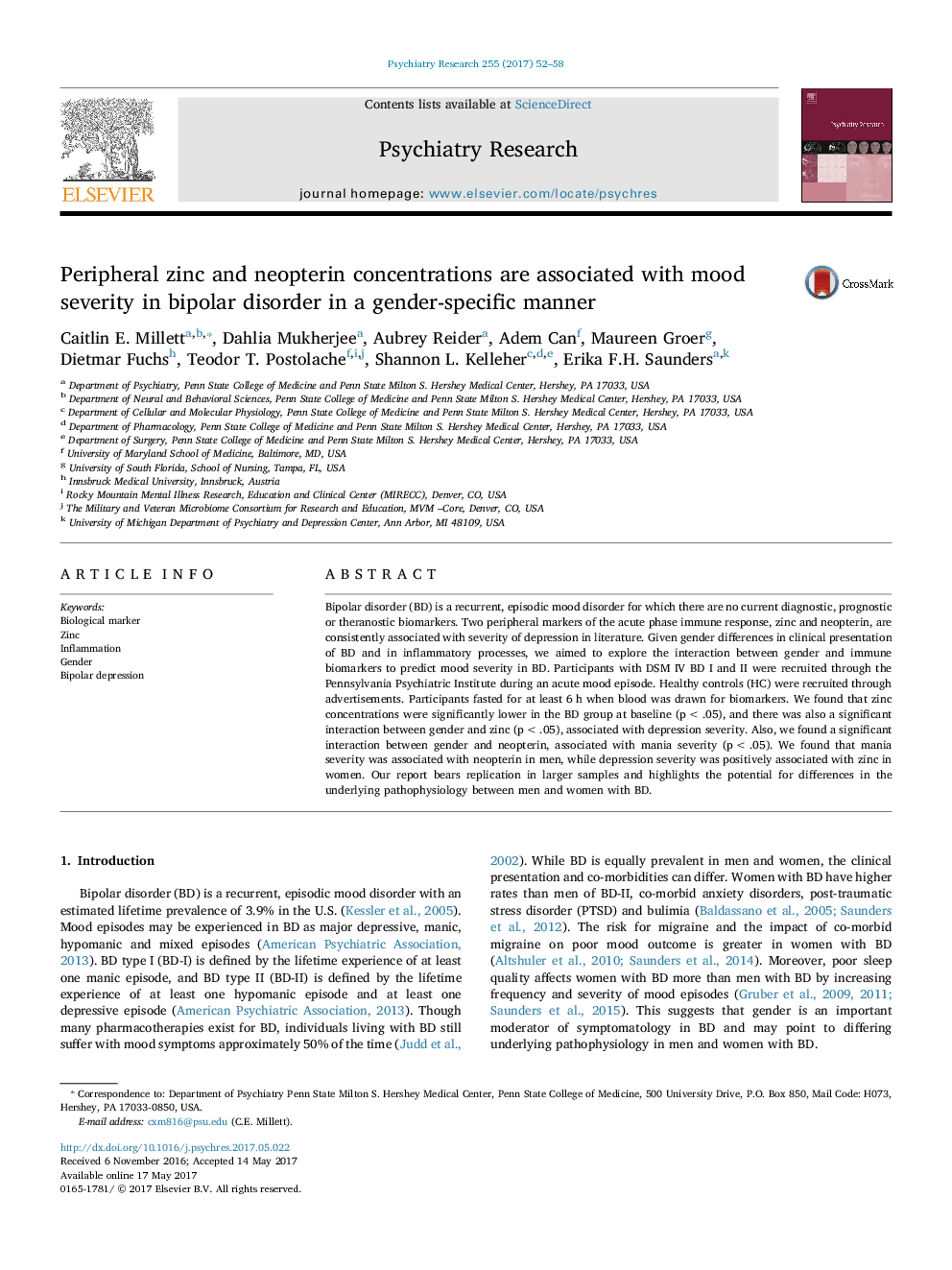ترجمه فارسی عنوان مقاله
غلظت روی و نئوپترین محیطی با شدت خلق در اختلال دوقطبی در یک شیوه خاص جنسیتی همراه است
عنوان انگلیسی
Peripheral zinc and neopterin concentrations are associated with mood severity in bipolar disorder in a gender-specific manner
| کد مقاله | سال انتشار | تعداد صفحات مقاله انگلیسی |
|---|---|---|
| 125307 | 2017 | 7 صفحه PDF |
منبع

Publisher : Elsevier - Science Direct (الزویر - ساینس دایرکت)
Journal : Psychiatry Research, Volume 255, September 2017, Pages 52-58
ترجمه کلمات کلیدی
نشانگر بیولوژیک، فلز روی، التهاب جنسیت، افسردگی دوقطبی،
کلمات کلیدی انگلیسی
Biological marker; Zinc; Inflammation; Gender; Bipolar depression;

